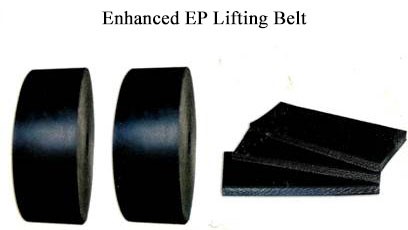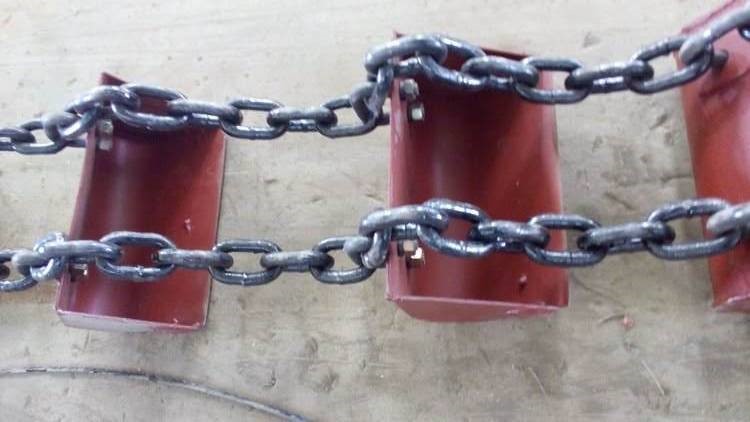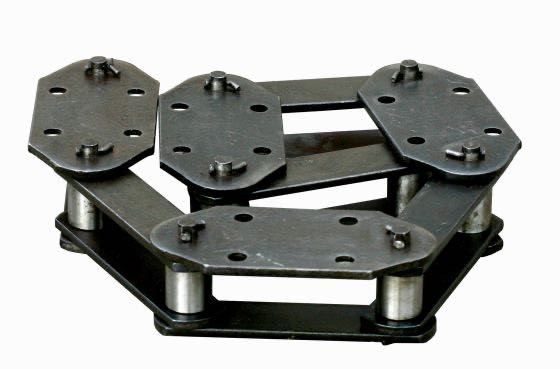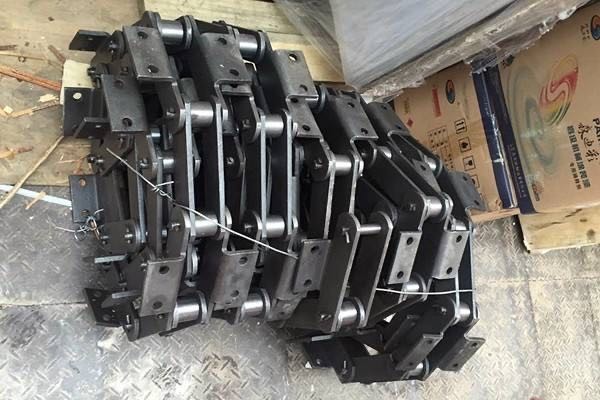Traction Device of Bucket Elevator
Date:2020-12-02 11:29:55
Author:admin
Views:
221
The traction parts of bucket elevators often use tape or chains.
1. Belt bucket elevator (TD type bucket elevator)
This kind of elevator uses tape as the traction part of the hopper. The hopper is fixed on the belt with a bolt with a special head. In order to prevent the head of the bolt from obstructing the passage of the tape through the drum, a corresponding groove is made on the rear wall of the hopper. The width of the tape should be selected according to the standard of the tape, and the bandwidth should be 30-40mm than the width of the hopper. The number of canvas layers of the belt should be calculated and determined according to the maximum traction of the belt (usually no less than 4 layers). The calculation method is the same as that of the belt conveyor, but because the belt is drilled with a hole connecting the hopper, the strength of the belt is reduced, It should be about 10% greater than the safety factor of the belt conveyor to check the strength of the belt.

The advantages of the belt bucket elevator are: low cost, low weight, stable work and no noise, higher operating speed, higher production efficiency, and less wear; the main disadvantage is: the hopper is weakly fixed on the belt , Because the traction is transmitted by friction, a larger initial tension is required. Therefore, it is mainly used for medium and small conveying capacity (within 60-80m³/h) and medium lifting height (usually within 30m), to transport powder and granular materials with low or medium density. The temperature of materials conveyed by ordinary belts does not exceed 60°C, and the use of heat-resistant belts allows up to 150°C.
Figure 1 Belt bucket elevator lifting belt
2. Ring chain bucket elevator (TH type bucket elevator)
The traction part of this hoist is a forged chain. The forged link chain is forged from round steel. The current shaped link chain pitch in my country is 50mm. The link between the link chain and the hopper adopts a chain hook. When the width of the hopper is 160-250mm, only one traction chain is used. When the width of the hopper is 300-630mm, two traction chains are used.
Loop chain is a commonly used traction component, its structure and manufacturing are relatively simple, and the link with the material is also very strong. However, the contact parts of the links are easy to wear, which reduces the strength of the chain, and the operation is not stable enough.
Figure 2 Ring chain bucket elevator
3. Plate chain bucket elevator (NE type bucket elevator)
The traction part of this hoist is a plate chain. The plate chain is composed of inner and outer chain plates, sleeves, rollers and pins, etc. The pitches of the plate chains currently finalized in my country are 200mm, 250mm, and 320mm. The material of the pin is 15Cr steel, which has been quenched at the carburizing place. The material of the sleeve is No. 15 steel, which is carburized and quenched. The inner and outer chain plates are made of Q235 steel. The plate chain has two structures: oil-filled and non-oil-filled.
The structure of the plate chain is relatively sturdy, which is suitable for hoists with large lifting capacity. However, the hinge joints are susceptible to material wear, and manufacturing and maintenance are more complicated.
Chain type (ring chain type and plate chain type) elevators are mainly used for material transportation with high productivity and large lifting height. They can be used to transport large materials with high density and strong abrasiveness. They can also be used to lift hotter materials and materials. The temperature can reach 250°C.
Figure 3 and Figure 4 Plate chain bucket elevator Plate chain





